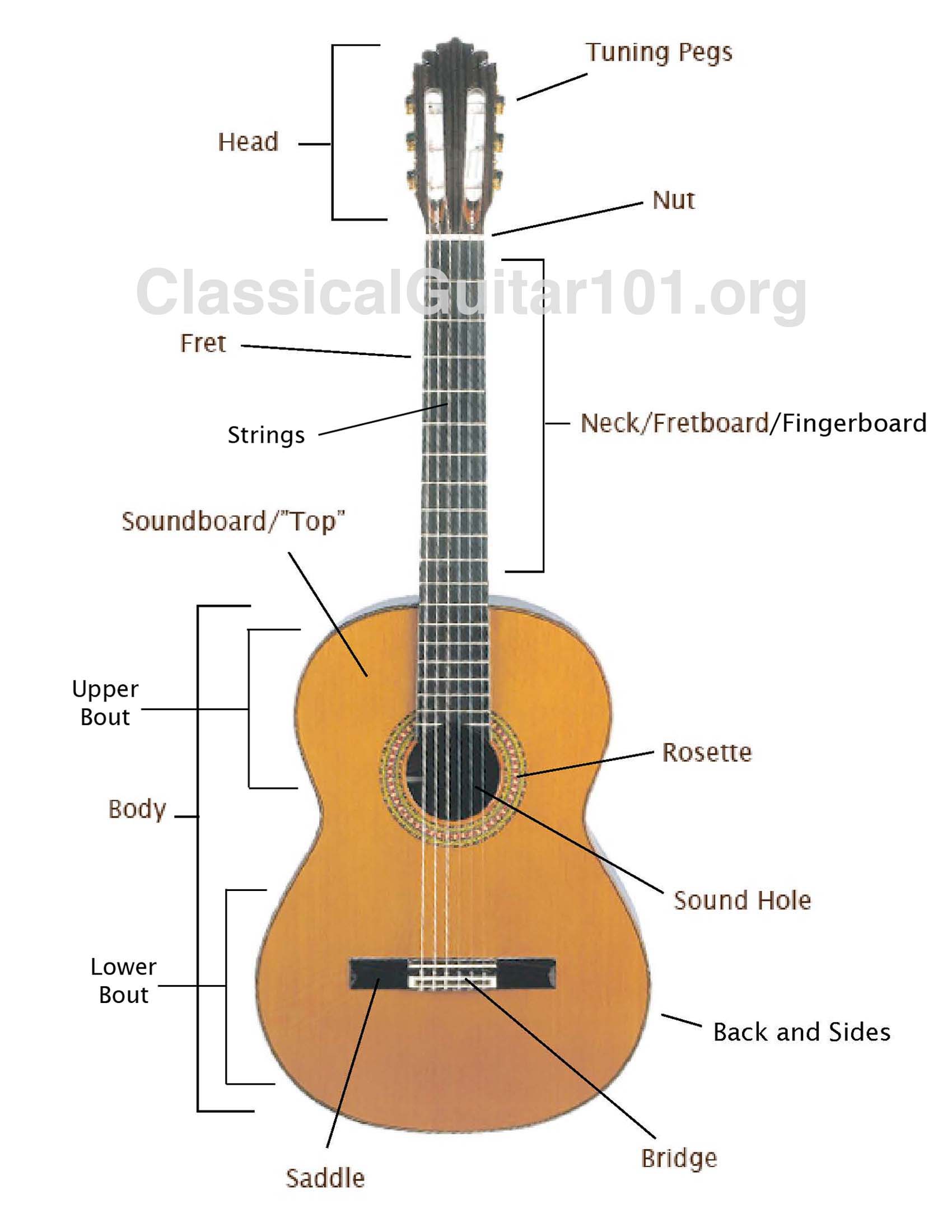Classical Guitar Part Names
These are the names of each part of the classical guitar. Most of these terms are very easy to memorize. For instance, the head of the guitar is at the top, the body is at the bottom, and the neck is in the middle, just like on a human body.
However, some of the names - such as the bridge, the nut, and the rosette - may be a little more difficult to remember. Do not worry if you cannot memorize all of these names at first. You can always bookmark and refer back to this page if you need it later.
Guitar Parts Diagram

Guitar Parts Definitions
- Back - The flat piece of wood on the back of the body
- Body - The large resonating chamber on the bottom half of the guitar. Includes soundboard, back, and sides.
- Bout - The large round, circular sections of the body. The guitar has two bouts. The upper bout is slightly smaller, while the lower bout is slightly larger.
- Bridge - The thin piece of wood where the strings are tied on the soundboard. The bridge is attached to the saddle.
- Frets - The thin pieces of metal inlayed into the fingerboard/neck. Most classical guitars have 19 frets.
- Head/Headstock - The square piece of wood located at the end of the neck. The tuning pegs are attached to the head.
- Fretboard/Fingerboard - The long black piece of wood with inlayed frets located on the neck.
- Nut - The thin, white piece of ebony at the top of the neck. The nut has 6 small grooves to hold the strings.
- Neck - The long piece of wood between the body and the head. The fretboard is part of the neck.
- Rosette - The circular, decorative inlay around the sound hole.
- Saddle - The rectangular, dark piece of wood that connects the bridge to the soundboard.
- Sides - The curved pieces of wood on the side of the body.
- Soundboard/Top - The large, lightly-colored piece of wood on the front of the body. This is the part that vibrates and helps produce a the sound of a guitar.
- Sound Hole - The circular hole cut into the soundboard.
- Strings - The six nylon wires attached to the guitar.
- Tuning Pegs/Tuning Heads/Tuning Gears - The small white pegs that connect to the head and allow you tune the strings.
Copyright 2014 © ClassicalGuitar101.org | All Rights Reserved
Popular Articles:
Making a Living as a classical guitarist
List of Classical Guitar Competitions
About Me
My name is Daniel Nelson, and I am a classical guitar teacher and performer from Los Angeles, California. Click here to learn more.
Leave a Comment!